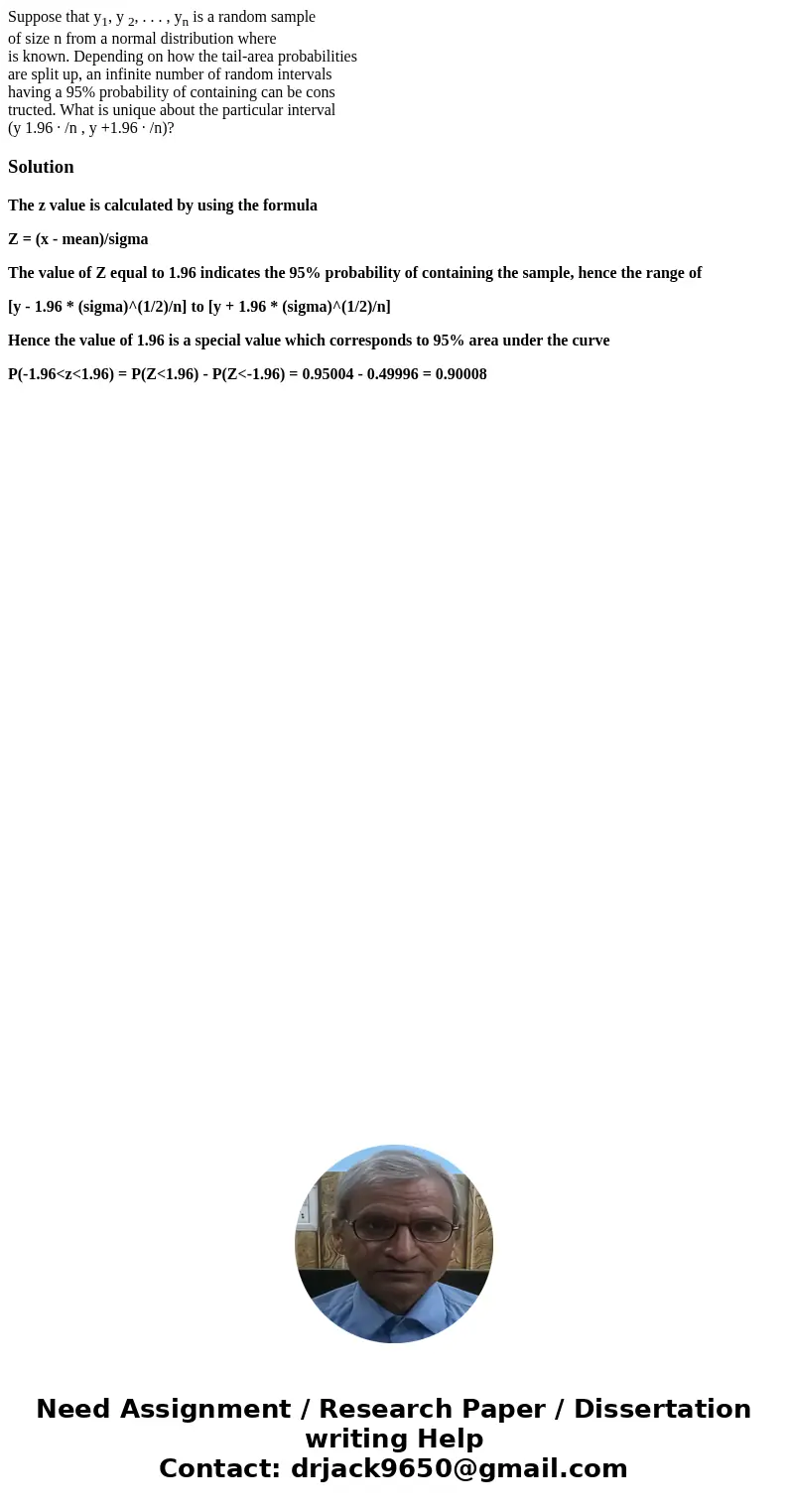Suppose that y1 y 2 yn is a random sample of size n from
Suppose that y1, y 2, . . . , yn is a random sample
of size n from a normal distribution where
is known. Depending on how the tail-area probabilities
are split up, an infinite number of random intervals
having a 95% probability of containing can be cons
tructed. What is unique about the particular interval
(y 1.96 · /n , y +1.96 · /n)?
Solution
The z value is calculated by using the formula
Z = (x - mean)/sigma
The value of Z equal to 1.96 indicates the 95% probability of containing the sample, hence the range of
[y - 1.96 * (sigma)^(1/2)/n] to [y + 1.96 * (sigma)^(1/2)/n]
Hence the value of 1.96 is a special value which corresponds to 95% area under the curve
P(-1.96<z<1.96) = P(Z<1.96) - P(Z<-1.96) = 0.95004 - 0.49996 = 0.90008

 Homework Sourse
Homework Sourse